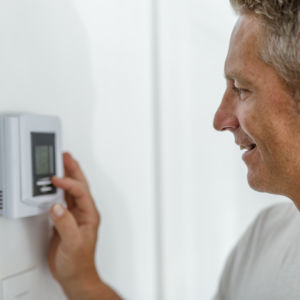In France, frustrated motorists snarled roadways for weeks as they protested an increased fuel tax. President Emmanuel Macron was eventually forced to blink, rescinding the tax, to the chagrin of those concerned about climate change. Unfortunately for consumers, government observers in the U.S. and abroad believe higher energy costs are unavoidable if climate change is to be halted. In fact, state level policies are already making monthly energy bills more expensive–a trend that will likely continue.
Renewable energy portfolio standards are being adopted around the country as more and more areas “go green.” Hidden in these proposals, however, are inescapable price increases.
At the end of November, the Washington, D.C. city council voted on an ambitious clean energy proposal that would transition the city to 100 renewable energy by 2032. The legislation is is full of goodies for the green industry, including promoting electric cars, raising building energy efficiency standards, and a “Green Bank” to fund environmental programs.
Funding for the Green Bank will come from increased taxes on gas and electricity bills. The Council says that D.C. residents can expect to pay about $2.10 more per month on their gas bill and around $1 dollar more on their electricity rates.
Further west, Xcel Energy, a utility serving customers in Minnesota, Michigan, Wisconsin, North Dakota, South Dakota, Colorado, Texas, and New Mexico became the first to commit to 100 percent “carbon free” by the year 2050. The utility is expanding its wind and solar operation and also believes that new nuclear construction will play an essential role. The only catch?
Consumers are likely to see increased costs. The Center of the American Experiment (CAE), a Minnesota-based free-market think tank, says utility bills could even double.
“Some people may be inclined to think ‘Well, Xcel is a private company and they can do what they want,’ and I would be amenable to this argument if it were actually true, but Xcel is not really a private company, it is a government-mandated monopoly utility company,” writes Isaac Orr, a policy fellow at CAE.
“Customers cannot simply choose another provider if they are unhappy with the service. They are stuck with Xcel,” he continued. Orr says it may be time to end Xcel’s monopoly status and allow more consumer choice.
To pay for investments in wind and solar, over the last year Xcel has petitioned state legislatures in Colorado, Texas, Wisconsin, Minnesota and New Mexico to raise rates. Utility customers in Texas, however, dodged a bullet on Friday, when the state’s Public Utility Commission (PUC) decided not to rule on a proposal that would have changed capacity markets in the state.
Capacity markets are where power is sold by generators to the utilities who deliver it to customers. The markets incentivize selling power when demand is high, making it economically feasible for power plants to sit idle for long periods, waiting to fire up on hot, still summer days. The proposal would make it more expensive for wind and solar power to be transmitted to consumers.
“Since electricity cannot be stored on a large scale, a functioning grid requires that there be enough capacity to meet demand at all times. This means that for most of the year, a significant amount of generating capacity has to be kept in reserve, only to be used during times of peak demand (which in Texas is in the summer). How to ensure that there will be enough capacity has been a matter of much consternation and controversy,” says Josiah Neeley, director of energy policy at the R Street Institute.
Texas uses price signals to encourage generators to come online in periods of high demand. Replacing it with an alternate capacity market system would cost consumers $4 billion.
Proponents of the rule change say that the present system effectively subsidizes wind and solar power by charging proportionately less expensive transmission fees. While changing the system may help some generators to continue operating, the true costs of it would fall on consumers.
American ratepayers are aren’t taking to the streets like drivers in France. But they are learning a similar lesson: Going green requires paying more green.

